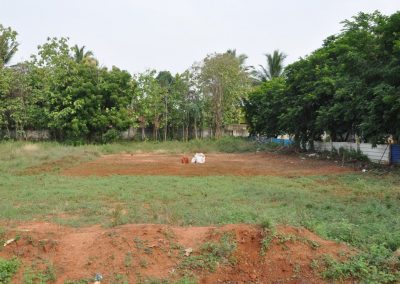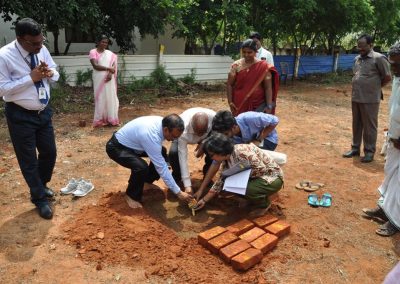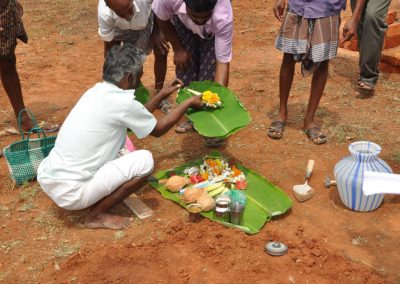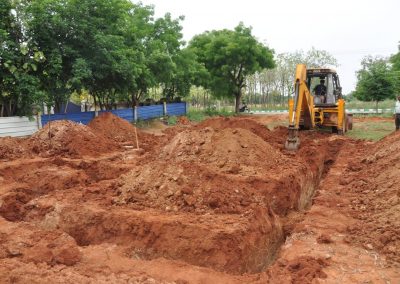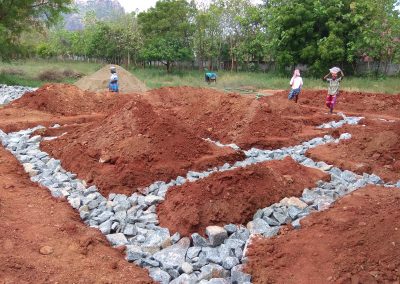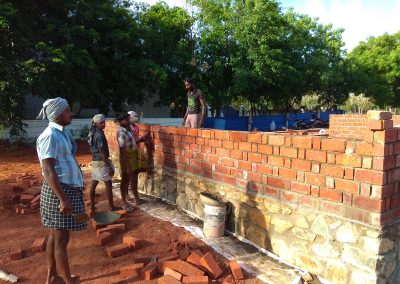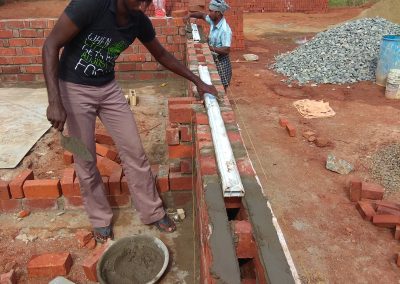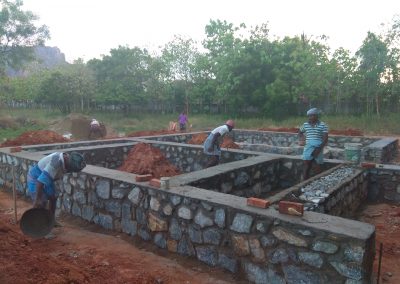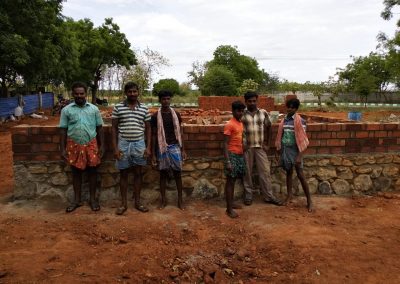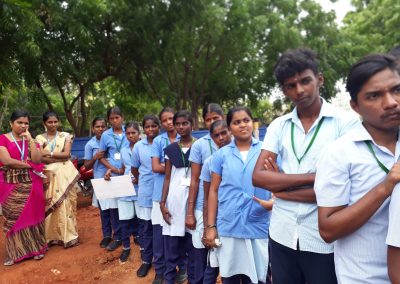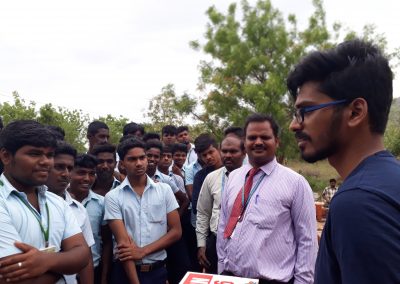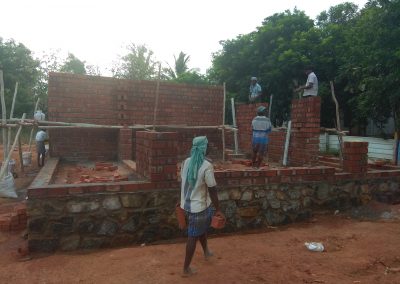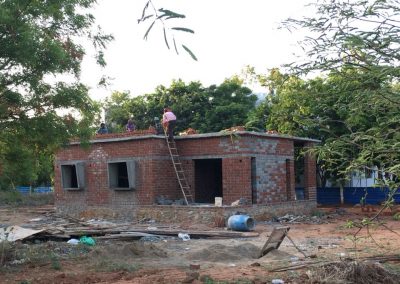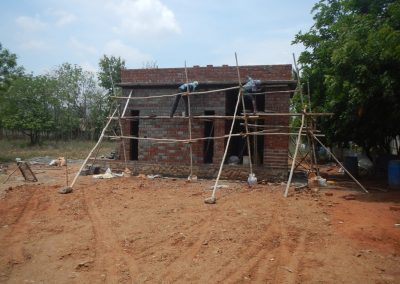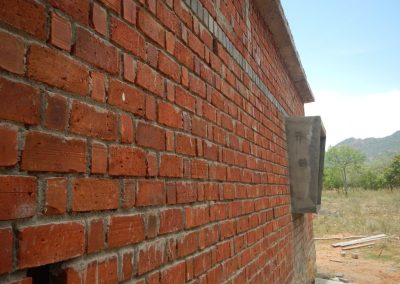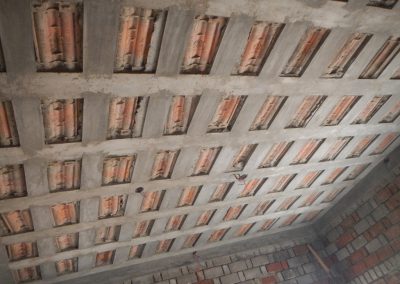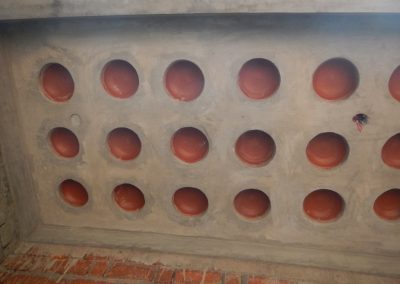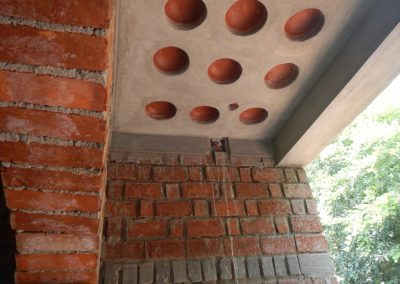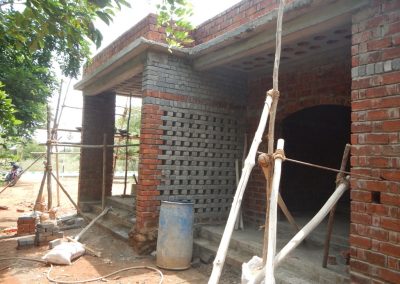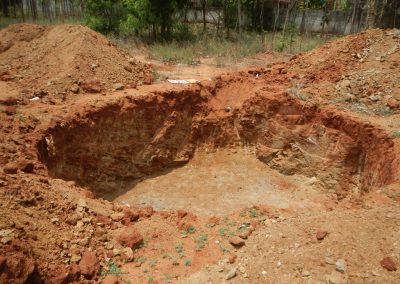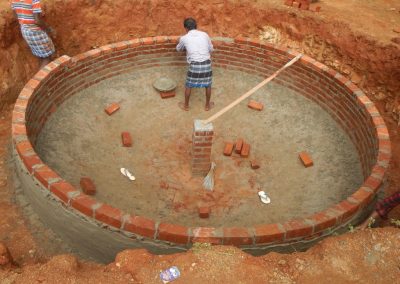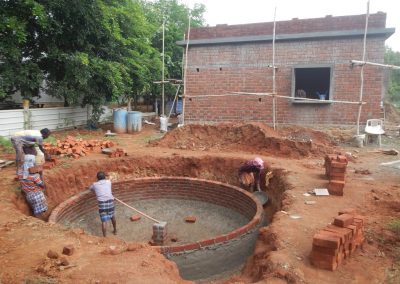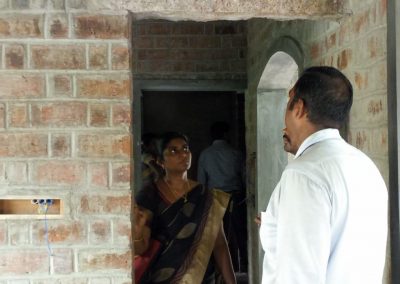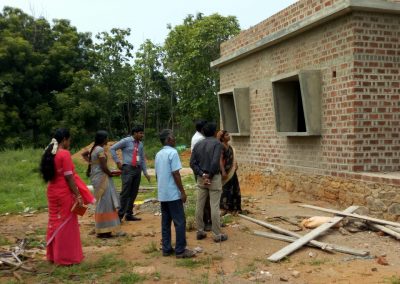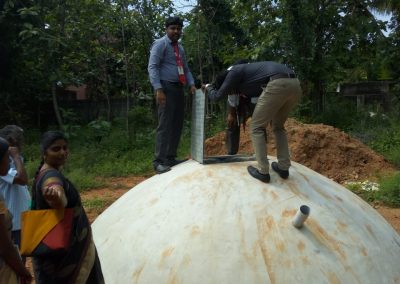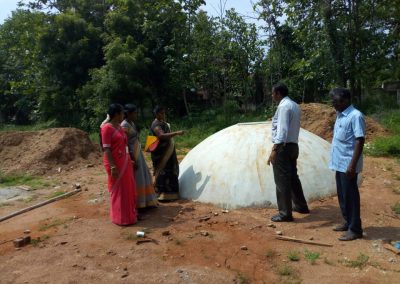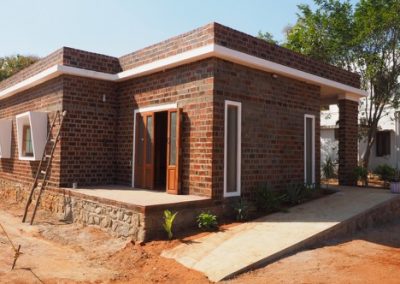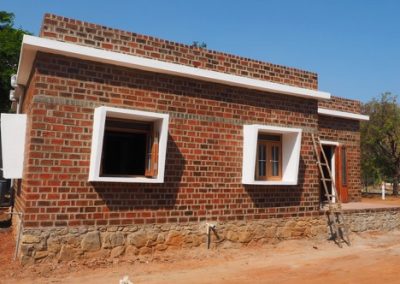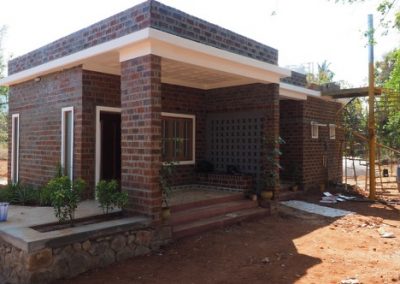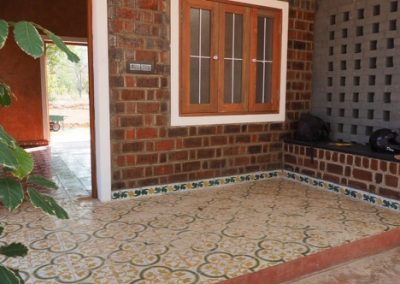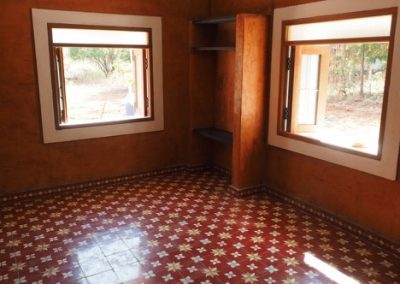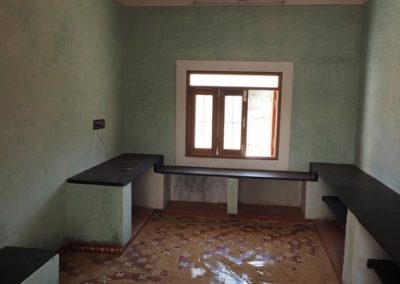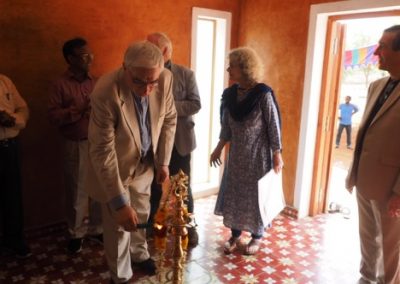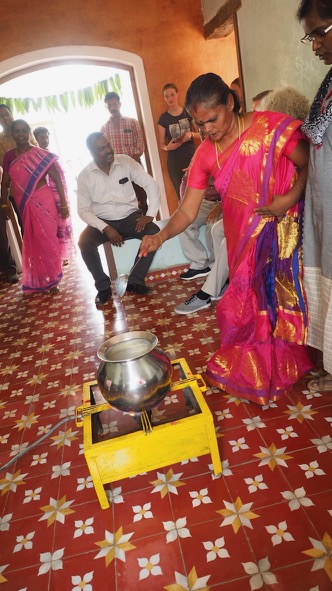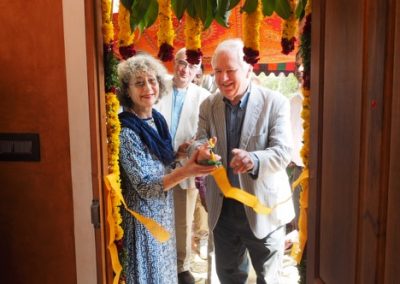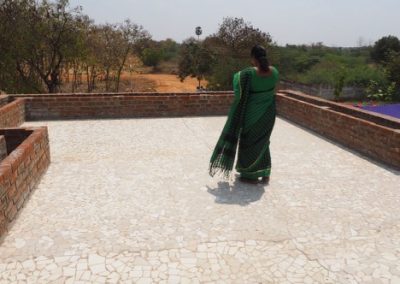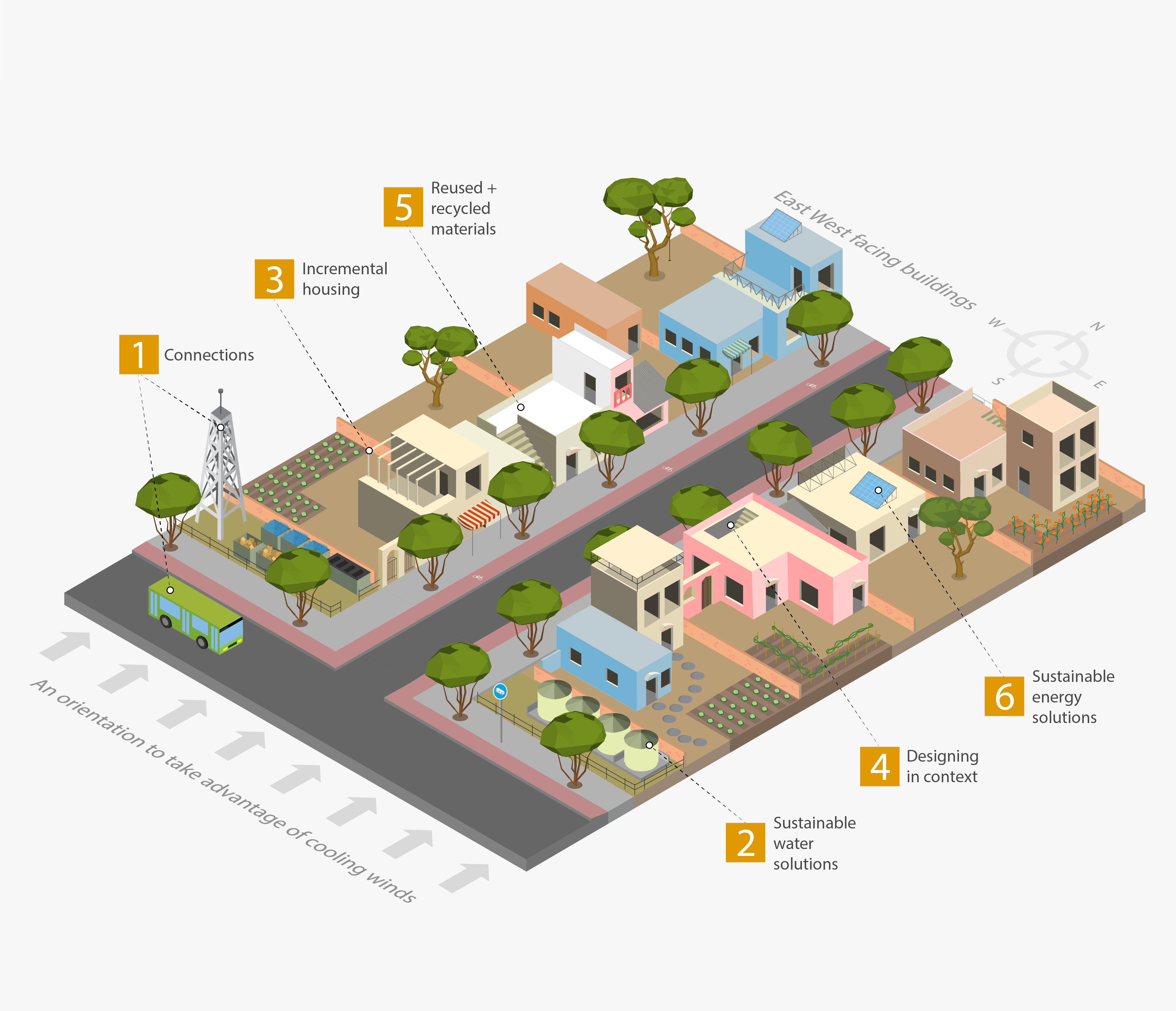The SCAD Eco-House
Vidhya Mohankumar, the chosen architect (based in Chennai) first met Nicholas Falk through a mutual contact at Arup, when he agreed to write an article on future-proofing Indian cities for a journal produced by Urban Design Collective, a collaborative platform for creating liveable cities which Vidhya founded in 2011. After meeting the project team and URBED staff in Manchester in July 2017, it was agreed with SCAD to appoint her firm to assess possible sites, and then to design and supervise construction. She started in August 2017 with a brief to design somewhere that was flexible, with scope for expansion, and with as many ‘eco’ features as practical. Two design options were presented. Each demonstrated 6 scenarios for incremental expansion, both horizontally and vertically.
An assessment of all the possible sites favoured a location near the existing guest houses on SCAD’s Cheranmahadevi campus, in a beautiful and sheltered setting, close to the campus’s main access road and an existing residential neighbourhood. The soil is silty clay. It requires stabilisation through fly ash, lime or cement for construction. It is clear of trees and can make use of existing services initially. Temperatures are normally between 26 and 40 degrees Celsius but humid, and the building has to cope with moderate monsoon rains.
The prototype is costing around £12,000-£14,000 to construct a unit of 900 sq. ft. This size is rather generous for a one-bed unit. It was chosen to be able to demonstrate various possibilities in low-cost and alternate construction technologies, while also offering the possibility to experience a higher quality of life in such a unit.
Design features include:
- Use of traditional local materials such as locally produced clay bricks, terracotta, fly-ash bricks and stone;
- Random rubble masonry foundation and plinth to raise the unit above ground level.
- Rat trap brickwork walls for insulation/passive cooling and a 25% cost reduction on bricks;
- Minimal use of concrete beams and no concrete in lintels;
- Lightweight unventilated composite roof slab, incorporating terracotta tiles as filler material and a partial roof garden;
- Blank Western wall to limit solar heat gains;
- Water recycling through an innovative domestic system;
- Solar panels – the intention is to use photo-voltaics, with the objective of being self-sufficient in electricity;
- Predominantly natural ventilation: no air-conditioning, just fans powered by solar generated electricity for the hottest days;
- Shaded veranda for cooling airflow and to sit out and have contact with neighbours;
- Small yard for growing food.
Construction begins summer 2018

Connections
ICT links and phonelines to make communication and distance learning easier, as well as maximising use of public transport, walking and cycling.

Sustainable water solutions
Sanitation measures to minimise unnecessary water consumption while also improving health, for example through drawing water from restored local ‘tanks’ , and processing waste products in line with current sustainable technologies.

Incremental housing
Plots that enable subsequent extensions and improvements, including space for ‘kitchen gardens’ for healthier living, and lots of trees for natural cooling to avoid the need for air conditioning.

Designing in context
Designs that respond to the locality such as houses in rows or around courtyards, with space for contemporary needs such as domestic toilets, waste disposal and recycling.

Reused + recycled materials
Construction out of reused and recycled materials, and that explore the potential for using natural materials, such as ‘rammed earth’ or Hempcrete.

Sustainable energy solutions
Use of 12/24 volt electricity from solar panels with mini grids and battery storage, and natural ventilation and insulation to reduce dependence on an unreliable electricity grid.

Collaboration
Working together for the common and long term good.

SURGe has been funded and supported by the URBED Trust, a newly created foundation awaiting charitable status with the goals of promoting research and the discussion of cities, urban regeneration, and urbanism. The Trust’s main aims are to promote research into city development across the world, and to act as a forum for debate and discussion.
Contact us
Manchester office
Fifth Floor
10 Little Lever Street
M1 1HR
London Office
The Building Centre
26 Store Street
WC1E 7BT
Quick links
